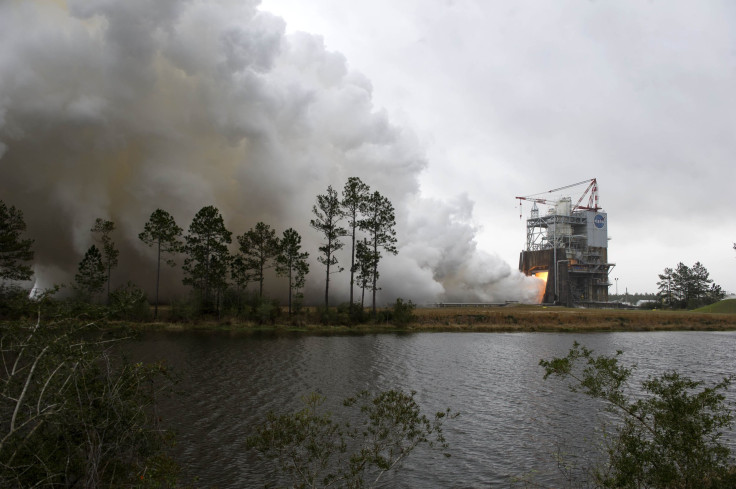Watch NASA Test A Rocket Engine Live For The Mission To Mars

This afternoon at NASA Stennis Space Center in Mississippi a rocket that will be used for future missions for deep space destinations like Mars will be tested. The RS-25 flight engine E2063 was placed on the A-1 test stand in late September for Thursday’s hot-fire test.
The test was open to the public to celebrate Founders Day. The event is meant to celebrate 56 years of the rocket engine test site that was originally built to test the rockets used for the Apollo Program that sent to the first humans to the moon. Other activities included exhibits and speakers at the center.
The engine is undergoing testing to be used for NASA’s Space Launch System that will carry humans to deep space in future missions. This engine in particular is one of four that will be used to launch the SLS that will be the first to carry humans, according to NASA. The hot-fire test will be broadcast on NASA’s website as well as on its YouTube channel, coverage starts at 3:30 EDT but the hot-fire test is scheduled for around 3:45 EDT
What is a hot-fire test?
NASA has been testing the rockets it intends to use to send humans to deep space for a few years now. In 2016 the first engine E2059 underwent a hot-fire test for 500 seconds, that’s more than eight minutes of continuous fire from the rocket.
The SLS will be powers by the four rockets that will provide more than 2 million pounds of thrust along with two solid rocket boosters when the time comes for launch. The engines and boosters combined will provide thrust of more than eight million pounds. The engines are modified to perform at a higher level thanks to a new controller they’re equipped with. That controller carries information about the engine performance specifications and then communicates those by controlling the propellant mix ratio and thrust level, said NASA.
“During tests, the controllers are installed on a developmental RS-25 engine, which is then fired in the same manner and for the same amount of time that will be needed during an SLS launch. In addition to tests of actual flight controllers,” according to a NASA release.
NASA won’t send any people to Mars until at least the 2030s. The agency is currently working on the technology needed to get there as well as a way to sustain life on the Red Planet once its astronauts arrive. To prepare for the Mars mission the agency is on track to send another rover to the planet in the next few years to conduct further exploration and search for necessary resources.
Watch NASA test one of its rocket engines for the mission to Mars:
© Copyright IBTimes 2024. All rights reserved.





















